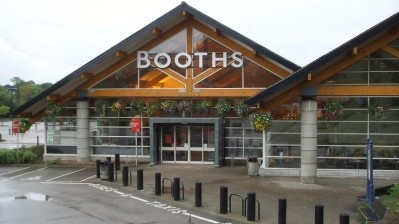Supply chain systems to help with retailer failings

If you were looking for an example of a relatively small-sized food business (SME) grappling with some fairly large-sized opportunities, Butlers Farmhouse Cheeses in mid-Lancashire would be a good place to start.
Home of the Blacksticks range of blue cheeses, among many others, Butlers has a turnover of around £10M and output in the order of 1,000t a year. It supplies most of the major retailers, some independents and foodservice customers, and has pocketed some awards along the way.
The firm installed its first production management software system in the summer of 2013 across a twin-site dairy and cutting-and-packing operation. “Before that, we used a complex myriad of spreadsheets and paper-based reports to track stock and plan production,” says systems administrator Justin Burton.
Communication of stock level and grading information between the two sites has improved, and the “green shoots of success” are starting to push through to the next layer of benefits: work in progress and finished goods available. “I expect the ‘usefulness’ of the system to grow exponentially over the course of the next six months, when automatic traceability and use-by date reporting has been improved,” he explains.
Information transparency (Return to top)
Burton gives special emphasis to gains in the area of information transparency: “This allows us to build and improve on many areas as a collective, rather than as a few people dealing with the information on their own.”
By comparing products from the dairy site with those from cutting/packing, the sharp increase in complexity at the level of final stock-keeping units (SKUs) becomes clear. Burton describes product delivered from the dairy as “a small number of SKUs moving down a linear channel”. He explains: “The cutting-and-packing centre takes these SKUs (approximately 15) and cuts and packs them into over 150.”
The Integreater production management software from Systems Integration has already benefitted the dairy site’s relatively simple onwards ‘supply chain’. “The same could be said for the second site, although the scope for improvement and benefit is much greater because of the complexity involved,” says Burton.
He adds: “I think there has to come a point where the number of SKUs becomes unmanageable without a system [of this sort].”
In fact, better management of stock availability is becoming a prime concern for food manufacturers large and small. At grocery think tank IGD, senior supply chain analyst Richard Jones thinks he knows why.
“In the current competitive climate, with some of the loyalty consumers had in the past starting to disappear partly thanks to the European discounters finding growth is really tough,” he says. “Traditionally, people found this through cutting prices or new product development (NPD). But both these solutions have become more difficult and costly. Product availability, on the other hand, is a largely unexploited resource. It’s a way of increasing sales without having to invest in either special offers or NPD.”
Impact of stock-outs (Return to top)
‘Unexploited’ it may be, but as a topic it is certainly not new. Ten years ago, the Harvard Business Review (HBR) reported the impact of stock-outs, based on an international survey of 71,000 consumers. It concluded that they led to a 4% loss in sales for a typical chain, but that retailers themselves were largely responsible. It found that 72% of stock-outs were due to faulty in-store ordering and replenishment practices.
At supply chain software company @logistics Reply, partner Jez Tongue suggests that little has changed over the intervening decade. “My experience from working with manufacturers is that retailers have no capability in forecasting demand,” he says. “With shorter shelf-life products there may be some level of predictability, but retailer forecasts are often woeful.”
He adds: “Many SKUs must be a nightmare to manage. Demand forecasting appears to be something of a black art, and it’s always wrong. The only question is by how many degrees.”
The 2004 research asked whether, faced with stock-outs, consumers would simply skip the purchase, delay it, look for it in another store, buy an alternative from the same range or from another brand. It showed, for example, that 43% of those shopping for cosmetics looked for the same item in another store, while only 8% substituted a different brand.
For coffee, the equivalent figures were 29% going elsewhere and 20% buying a different brand. For salted snacks, the numbers swung to 21% and 25% respectively, indicating that brand loyalty in many categories stretches only so far. And many would suspect this is a trend which has, if anything, worsened over the decade.
Fortunately, while consumer shopping options may have widened and attitudes hardened the technology available to manufacturers and retailers has improved. In large part, this is thanks to the better collection and analysis of point-of-sale (POS) data.
For systems supplier Infor, this can form the basis for predictive planning which is intelligent and automated. “Not everything is predictable by looking in the rear-view mirror,” says vice president for supply chain Pieter Leijten. “For better statistical forecasting, firms are carrying out less analysis of POS data, but adding value by looking at what’s happening in the wider market. People are also adding granularity by tracking, for example, which distribution centres (DCs) are experiencing different levels of demand.”
Valuable new capabilities now allow the analysis of previous forecasting accuracy, says Infor. The company even offers its ming.le social platform which makes internal electronic discussions part of the auditable trail.
Predicting trends (Return to top)
For many businesses, this type of intelligent forecasting could be much better, says Infor. “The market tends to be quite strong when it comes to inventory visibility, but how you can predict what’s coming tends to be rather less well-managed,” says Leijten. “People can still be surprised by the impact of a price promotion, for instance, that sells better than expected.”
This may be down to poor communication between retailer and supplier, but it may also reflect poor understanding. “If a line suddenly requires 200% capacity on a given product, the manufacturer won’t be able to respond,” he points out. “Retailers don’t always understand that.”
That said, manufacturer software systems will not always contribute positively, either, when it comes to managing abnormal peaks in demand. “It’s about finite capacity planning,” says Leijten. “At Infor, we offer standard manufacturing resource planning (MRP) logic, but we also have a solution which doesn't only follow and plan around standard demand. You may be able to outsource additional production, for instance, or introduce extra shifts. This is more supply chain optimisation than MRP logic.”
Systems can also calculate the overall profitability of different strategies. “Product value at 200% capacity may be higher than at 150%, but will the additional 50% actually be worth it?” he asks. “That way you can run ‘what if?’ scenarios.”
But costs and inefficiencies in the flow of product from supplier to retailer are not only to do with communicating and forecasting demand. As @logistics Reply’s Tongue explains, the company’s SideUp Reply supply chain execution software was installed some three years ago at one mid-sized (but unnamed) UK food manufacturer. Among other benefits, the system has generated a massive reduction in penalties for alleged short-shipping to retailers, he says.
Surprisingly, perhaps, Tongue explains that many SMEs do not have systems which report exactly how much product in how many traded units is delivered in a given shipment. One site averaged £6,000 a week in penalties to a single retailer because allegations of short-shipping could not be contested. “There was an immediate drop of 75% in penalty payments when our system was installed in 2011,” he says. “This has now dropped further to 95%, and the trend is still downwards. The system paid for itself in less than three months.”
Forecasting demand (Return to top)
When it comes to forecasting demand, though, the Reply group appears to be less confident than Infor that IT solutions exist. “You may get four or five amendments to an initial order via electronic data interchange (EDI), between 7am and 1pm when the first vehicle comes in,” says Tongue. “Retailers understand that, and don't tend to penalise suppliers for discrepancies. Ultimately, there may not be an answer in terms of forecasting. It may be more about the supply chain being able to respond more quickly.”
IGD’s Jones believes that systems have improved, partly because of the amount of data being collected, partly because of the increased speed of communication. “It’s about sales and supply chain functions working together, but across supplier/retailer boundaries,” he says. “After all, the retailer will benefit, too, if the supplier has the best and latest forecasts.”
He adds: “You have to talk about the software, but it’s also about working relationships, breaking down barriers and having the physical infrastructure in place.” An IGD London conference on March 27 will grapple with these and other issues to do with product availability.
If software can only really be an enabler, it is an increasingly affordable one. Tongue at @logistics Reply talks about the “democratisation” of web-based software.
At Butlers Cheeses, Burton believes the headline cost can still deter SMEs from investing. “Then there’s also the added cost and time of changing, which can't always be accurately budgeted,” he says. “But if you don't ‘bite the bullet’, what are the consequences?”
Improved demand forecasting and availability management would certainly help in making this type of investment more palatable.














